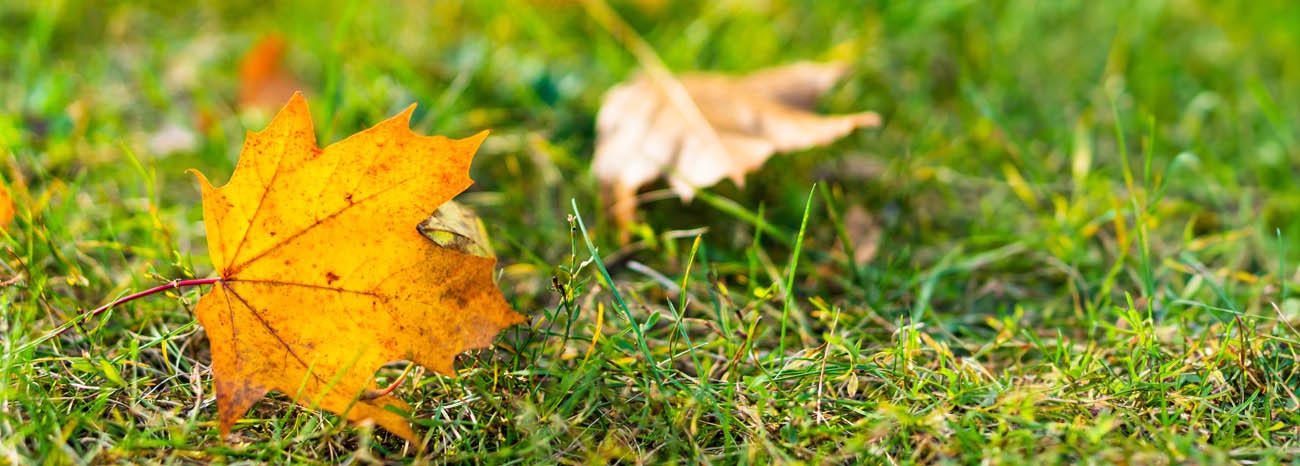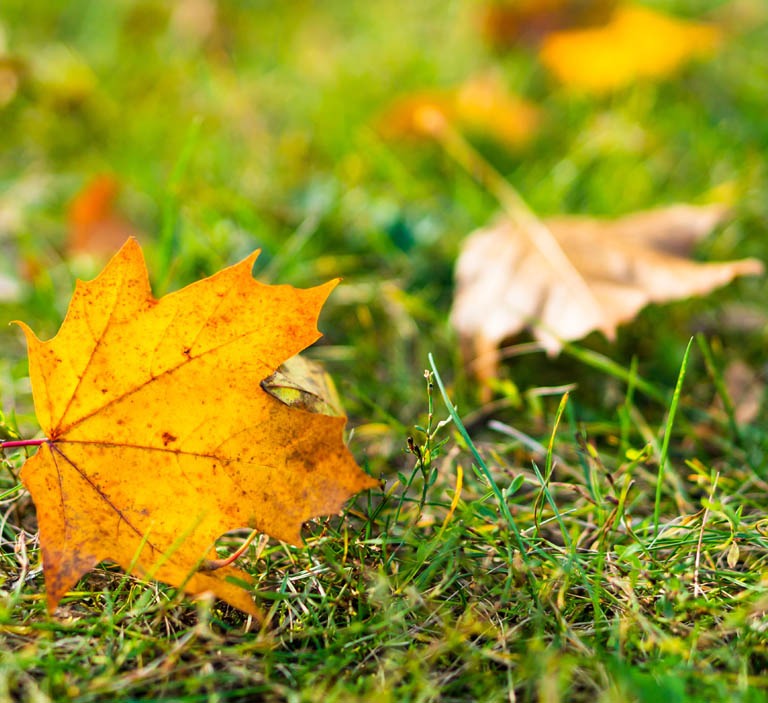When trees begin shedding their leaves in spring or summer, it can cause concern for many homeowners. While we often associate leaf drop with the arrival of fall, there are various reasons why trees might shed their leaves during these warmer months. Understanding the cause is key to ensuring the health of your trees and the overall beauty of your landscape.
Let’s explore the reasons for leaf drop–both natural and abnormal–to help you determine when to take action and when to simply let nature run its course.
Normal (Natural) vs. Abnormal Leaf Drop
Trees naturally shed leaves as part of their life cycle, but when leaf drop occurs outside the expected season, it might indicate an underlying issue. Understanding the difference between the two can help you protect your trees from stress and potential damage.
- Natural Leaf Drop: In some cases, leaf drop is a natural process that helps trees conserve resources. This type of leaf shedding is usually not a cause for concern and is actually a sign that the tree is healthy and functioning as it should.
- Abnormal Leaf Drop: When trees lose their leaves due to environmental stress, pests, diseases, or other factors, it could indicate a problem that needs addressing. This is when you should pay close attention to the signs your tree is giving you.
Reasons for Natural Leaf Drop
Seasonal Adjustments
Deciduous trees, unlike evergreens, are known for their seasonal leaf drop, losing their leaves every year. This process typically happens in fall but some trees might start shedding leaves earlier as they adjust to changing environmental conditions. For instance, during a particularly hot summer, some trees might drop a portion of their leaves to reduce water loss and prevent stress.
Self-Pruning
Another natural reason for leaf drop is self-pruning. Trees often shed leaves that are shaded and no longer contribute to photosynthesis. This self-pruning process allows the tree to focus its limited resources on its healthiest leaves and branches.
Reproductive Process
Some trees drop leaves as part of their reproductive cycle. For example, when a tree is flowering or fruiting, it may shed some of its leaves to redirect energy towards these reproductive processes. This type of leaf drop is typically brief and limited to a small number of leaves.
Environmental Stress Factors
Drought and Water Stress
One of the most common reasons trees lose leaves during spring or summer is drought or water stress. When trees do not receive adequate water, they may shed leaves to conserve moisture. This is particularly common in regions experiencing prolonged dry spells or when irrigation systems are not providing sufficient water.
Extreme Temperatures
Both heatwaves and cold snaps can cause leaves to drop prematurely. In hot weather, leaves might scorch and fall off due to heat stress. Similarly, a late spring frost can damage tender new leaves, causing them to fall prematurely.
Soil Compaction
Soil compaction is another environmental stress factor that can lead to premature leaf drop. When soil is compacted, roots have difficulty accessing the water, oxygen and nutrients they need to thrive.
Pests and Diseases
Common Tree Pests
Insects such as aphids, caterpillars, beetles and mites can cause significant damage to trees, leading to leaf drop. These pests feed on the leaves or sap, weakening the tree and leading to premature leaf drop. Look for signs of pest infestation, such as chewed leaves, sticky residue or visible insects on the tree.
Fungal and Bacterial Infections
Diseases caused by fungi and bacteria can also result in leaf drop. Fungal infections like anthracnose and bacterial blight often cause spots, wilting, and, eventually, the loss of leaves. Identifying and treating these infections early can help prevent more extensive damage.
Insect Damage
Certain insects, such as borers, can cause severe damage to trees by tunneling into the bark and wood. This damage disrupts the flow of water and nutrients, leading to stress and leaf drop. If you suspect insect damage, consult with an arborist to assess the situation and recommend treatment.
Nutrient Deficiencies
Soil Nutrient Imbalances
Trees rely on a balanced supply of nutrients to maintain healthy foliage. A deficiency in essential nutrients like nitrogen, potassium or iron can cause leaves to turn yellow and fall prematurely. Regular soil testing and appropriate fertilization can help prevent nutrient-related leaf drop.
Signs of Specific Deficiencies
Each nutrient deficiency causes unique symptoms in leaves. For instance, nitrogen deficiency often causes leaves to turn pale or yellow, while iron deficiency may cause a condition known as chlorosis, where the leaves turn yellow but the veins remain green. Identifying these symptoms can help you address the issue before it leads to significant leaf loss.
Tree-Specific Issues
Age and Health of the Tree
Older trees are more prone to leaf drop due to their declining health and reduced ability to cope with stress. As trees age, they become less efficient at absorbing and transporting water and nutrients, leading to stress and eventual leaf shedding.
Species-Specific Behaviors
Some tree species are naturally more prone to shedding leaves during the summer. For example, sycamores and maples often lose leaves due to heat stress. Understanding the typical behavior of your tree species can help you distinguish between normal and abnormal leaf drop.
Impact of Human Activities
Construction and Landscaping
Human activities such as construction and landscaping can stress trees, leading to leaf drop. Root damage from digging, soil compaction from heavy machinery or changes in soil grade can all contribute to tree stress and leaf loss. Trees are sensitive to changes in their environment, and even minor disturbances can have significant effects.
Improper Pruning
Pruning is essential for tree health, but improper pruning can cause stress and result in leaf drop. Over-pruning or pruning at the wrong time can leave trees vulnerable to stress and disease, leading to a decline in health.
When to Be Concerned
Identifying Warning Signs
While some leaf drop is natural, it’s crucial to recognize when it signals a more serious problem. Look for signs such as widespread leaf loss, discolored leaves, or signs of pests and diseases. If you notice these symptoms, it might be time to take action.
Consulting an Arborist
A professional arborist can assess the health of your trees, identify the cause of leaf drop and recommend the best course of action to restore tree health.
Preventive Measures
Proper Watering Techniques
Ensuring your trees receive adequate water is one of the best ways to prevent leaf drop. Deep, infrequent watering encourages strong root growth and helps trees withstand periods of drought.
Mulching and Soil Care
Mulching around the base of your trees helps retain soil moisture and regulate soil temperature, reducing stress on the roots. Maintaining healthy soil—with regular soil testing, aeration, and nutrient replenishment-–can help prevent many of the issues that lead to leaf drop.
Regular Monitoring
Regularly monitoring your trees for signs of stress, pests and disease can help you catch problems early so you can take preventative measures. Early intervention can prevent minor issues from becoming major problems, ensuring your trees remain healthy and vibrant throughout the year.
A Little Knowledge Goes a Long Way
Whether it’s a natural process or a sign of stress, recognizing the cause of leaf drop is crucial to protecting your trees and keeping your landscape looking its best.
If you still have more questions and would like to consult with one of our certified arborists, we are here to help. Visit http://emoyer.com/services/treeandshrubcare/ or call 215.799.2016.

